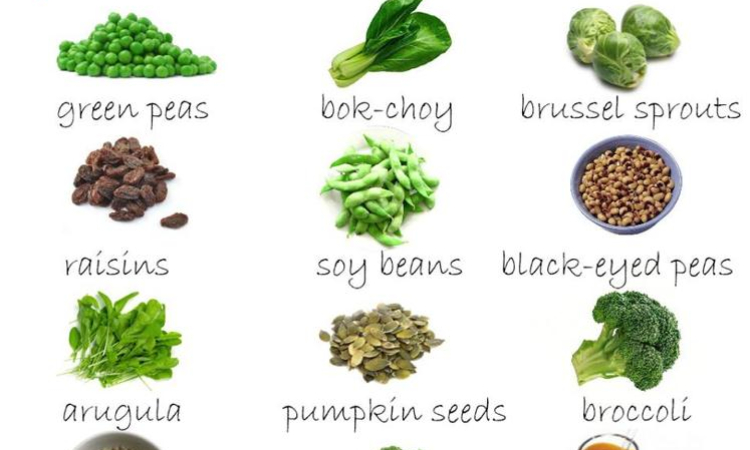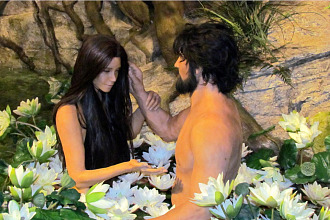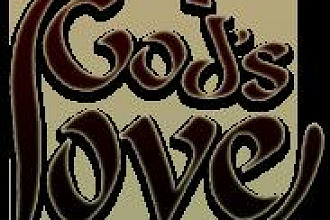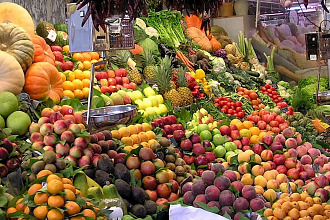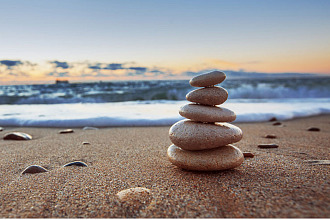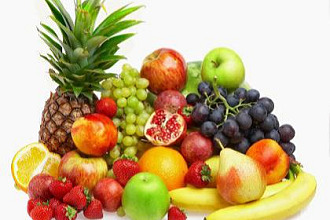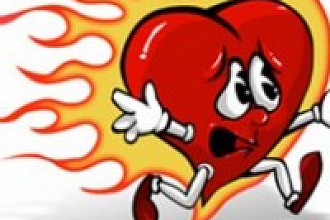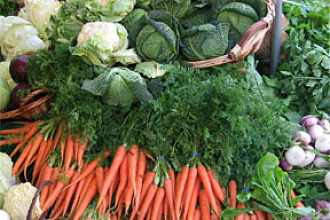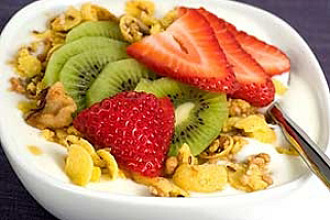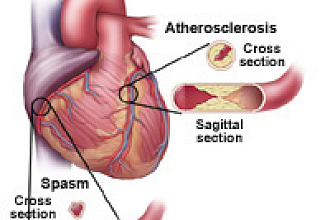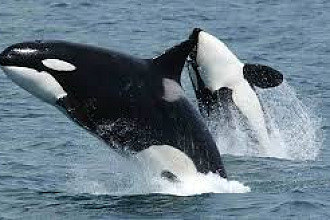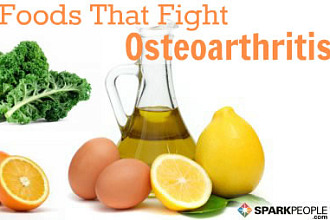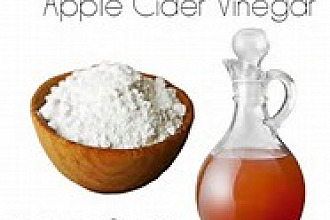Can vegetarians possibly get enough iron? The most recent information from the Food and Nutrition Board (FNB)--which establishes nutrient recommendations for Americans--says that vegetarians need nearly twice as much iron as omnivores. If this is true, iron deficiency should be rampant among vegetarians, since many vegetarians, particularly women, don't consume these suggested amounts. But is it?
Iron is necessary for the production of hemoglobin, the source of the red pigment in blood--which carries oxygen to the tissues. Iron deficiency anemia is characterized by small, pale red blood cells. Because less oxygen is delivered to cells, people with iron deficiency anemia are easily fatigued and more susceptible to infection.
Although most iron is found in hemoglobin, about 25 percent of the iron in the body is stored as ferritin, which is found in cells and circulates in the blood. When iron intake is chronically low, stores can eventually become depleted, decreasing hemoglobin levels. Ferritin levels below 12 micrograms per liter of serum are a sign of depleted stores.
Iron deficiency anemia is the world's most common nutritional deficiency, affecting 500 million people worldwide. Although it is much more common in developing countries, as many as 10 to 20 percent of American women between the ages of 15 and 50 are believed to be deficient in iron.
Small amounts of iron are lost through the normal sloughing off of intestinal cells, and some via sweat and blood loss, but iron in the body is regulated mainly by absorption. However, premenopausal women lose about 50 percent more iron than men because of menstrual flow. On average, men lose about 1.0 mg of iron per day and women lose about 1.5 mg (although, because of great variation in menstrual blood loss among women, some lose much more than this). Iron is poorly absorbed. To absorb enough to replace losses, men and post-menopausal women need to consume 8 mg of iron per day, and premenopausal women need 18 mg per day. American omnivore men consume considerably more iron than the RDA, but women fall short with an average intake of about 12 mg per day.
Many studies show that vegetarians have higher iron intakes than nonvegetarians. However, because iron is absorbed less well from plant foods, vegetarians have smaller iron stores than meat eaters, despite their higher intakes. The average male omnivore has about 1,000 mg of stored iron, enough to supply iron needs for about three years. Women omnivores have about 300 mg, enough to meet iron needs for six months. Iron stores in vegetarians are about 480 mg for men and 160 mg for premenopausal women.
Iron in foods
Food contains two types of iron. Heme iron is found only in meats. Non-heme iron is found in both meats and plants and is absorbed less efficiently than heme iron. However, non-heme iron is also much more sensitive to a variety of factors that affect the absorption of iron. For example, iron status has a significant effect on absorption. People with iron deficiency anemia absorb iron very efficiently, but the effect on the two different types of iron is quite different. When people become iron deficient, their absorption of heme iron may increase twofold, but absorption of non-heme iron can increase 10-fold.
The amount of iron in a meal also affects the rate of absorption, but again this effect is different between the two types of iron. For example, in one study, 20 percent of available heme iron was absorbed whether a meal contained 1.5 mg or 6.0 mg of iron. But non-heme iron absorption was three times higher from the meal that contained less iron. The net effect was that, despite the difference in iron content of the two meals, about the same amount of total iron was absorbed.
Iron absorption
A number of dietary compounds inhibit the absorption of iron. Coffee and tea are powerful inhibitors of iron absorption because they contain compounds called polyphenols. Polyphenols are also found in some herbs--and therefore in some herbal teas--and in red wine. Some spices commonly used in Indian cooking are also inhibitors of iron absorption. Soy and egg protein, as well as a large dose of calcium at a meal, can also reduce iron absorption.
Because dairy foods are rich in calcium and do not contain iron, over-reliance on dairy foods by very young children may raise risk for iron deficiency when these foods replace iron-rich foods. Meeting the RDA for calcium and spreading calcium intake over the course of the day probably does not affect iron status, however. Because cow's milk inhibits iron absorption somewhat more than goat's milk, it is possible that other factors in dairy foods, such as protein, have inhibiting effects on iron--just as soy and egg protein inhibit it.
By far the most powerful inhibitor of iron absorption in plant-based diets is phytate, a compound that contains the mineral phosphorus. In experiments, phytate can reduce iron absorption by 90 percent. The phytate content of vegan diets is believed to be as much as three times that of omnivore diets. Lacto-ovo vegetarian intake is somewhere between the two. Whole grains and legumes are particularly high in phytate. However, foods high in phytate also tend to be high in iron so eating a high-phytate diet is likely to have a lesser effect on the total amount of iron absorbed than might be expected. In one study, those subjects who ate a diet low in phytate (and therefore, lower in whole grains) had an iron intake of 8.3 mg, while those consuming a high-phytate diet consumed 12.2 mg of iron. The total amount of iron absorbed was about the same between the two groups; even though the group eating whole grains had lower absorption rates, their higher iron intake compensated for this. For this reason, it isn't necessary to try to reduce phytate intake on a vegetarian diet. In fact, phytate may have its own health-promoting effects since it has been shown to be a potent antioxidant.
Many dietary factors counteract the effects of phytate. Vitamin C is probably the most important of these. Adding just one-half cup of cauliflower to a high-phytate meal increases iron absorption by two and one-half times. In order to have this effect, however, vitamin C must be consumed at the same time as the iron-rich food. Vitamin C is an acidic compound that makes iron more soluble and, therefore, increases its absorption. Fruits and vegetables also contain small amounts of other organic acids that promote iron absorption. In addition to their vitamin C content, citrus fruits contain citric acid, and these two compounds work together to make iron more absorbable. Some research also suggests that beta-carotene--the vitamin A precursor found in fruits and vegetables--boosts iron absorption.
Finally, food processing breaks phytates down to some degree. When bread dough is leavened, the phytate content is reduced. Therefore, whole grain bread is a better source of absorbable iron than unleavened breads and crackers. Fermentation also increases the availability of iron so that fermented soyfoods like tempeh are a better source of iron than many other soyfoods. (See the March 2001 issue of VNHL for information about fermented foods.) Soaking grains and legumes can also enhance absorption of iron.
Vegetarian iron needs
Even taking into consideration factors like vitamin C intake and use of leavened bread, vegetarians absorb less iron from their diets than meat-eaters. Some research has suggested that some vegetarians may absorb only about 10 percent of the iron in their diet while omnivores absorb about 18 percent. Therefore, for each age group, the vegetarian RDA for iron is 1.8 times the RDA for omnivores. Premenopausal omnivore women need 18 mg of iron per day; multiplying this by 1.8, we see that vegetarian women need about 33 mg of iron per day. (Vegetarian women using oral contraceptives need only 20 mg of iron per day since they lose less iron through menstruation.) Since omnivore men need 8 mg of iron, vegetarian men should strive to consume 14.
Vegetarian iron status
Studies of iron intakes of vegetarians show that vegetarian men are likely to meet their iron recommendations. But like their meat-eating counterparts, many vegetarian women fall short of meeting dietary iron recommendations. However, it is not clear that this translates to poorer iron status. Most studies show that although vegetarians do have smaller stores of iron than omnivores, their stores are just as likely to be adequate. Dr. Ella Haddad from Loma Linda University compared vegan premenopausal women to omnivore women and found that the percentage of women with low iron stores was similar in both groups.
Other research shows that many vegetarian women have adequate iron status even with iron intakes well below the vegetarian RDA. For example, in Australia, vegetarian women who consumed on average just 10.7 mg of iron per day had average serum ferritin levels that were within the normal range, although they were significantly lower than levels of female meat eaters. In New Zealand, vegetarian women with an average iron intake of a little less than 15 mg per day had serum ferritin levels well within the normal range.
If vegetarian women are not meeting the FNB recommendations, how is it that more of them are not iron deficient? There are several possible explanations. First, iron recommendations for vegetarians may be based on assumptions that don't reflect how vegetarians really eat. Recommendations are based largely on one study that compared two diets. The first included meat and a number of enhancers of iron absorption. The second was high in inhibitors of iron and low in enhancers. It restricted fruits and vegetables, and vitamin C in particular. And it included coffee or tea at every meal. Initially, there was a fourfold difference in iron absorption between the two groups, but after two weeks, this difference decreased so that those consuming the iron-enhancing diet were absorbing iron at about twice the rate of those consuming the diet with iron inhibitors. However, this diet, which was exceptionally high in inhibitors and lacking in factors that boost iron absorption, is not typical of the way most western vegetarians eat.
It is also likely that some adaptation to lower iron intakes takes place. One study found that vegetarians lost far less iron from their intestines, compared to omnivores. And in men consuming a diet with low iron bioavailability, iron absorption increased over time. Therefore, it is possible that consumption of a diet with low iron bioavailability can lead to increased absorption and decreased excretion of iron.
Does this mean that the FNB recommendations for vegetarians are too high? The answer depends on a number of factors. In developing countries, diets do contain many inhibitors of iron absorption and, often, few enhancers. High intakes of iron should certainly be recommended for these groups, even assuming that some adaptation takes place. This is especially true since iron deficiency is a worldwide problem. A vegetarian diet that is low in fruits and vegetables and that emphasizes cereals over breads is more likely to compromise iron status. For example, among children following a macrobiotic diet--which is often low in fruits and emphasizes cereal grains--15 percent had poor iron status. In some developing countries, such as India, iron deficiency anemia is much more likely because of widespread parasitic infections, which affect iron status, and because of the use of unleavened breads like chapatti, and the frequent consumption of tea.
However, western vegetarians who choose a diet that is rich in iron enhancers and lower in inhibitors (like tea, coffee, and Indian spices) may have a healthy iron status despite an intake lower than that recommended by the FNB.
Around the world, recommendations for iron intakes of vegetarians vary considerably. The Food and Agriculture Organization (FAO) recommends that women consuming plant-based diets very high in inhibitors of iron absorption need 29 mg of iron per day. The Dutch Nutrition Council recommends 22 mg per day for vegetarians, and in India the recommendation is 17 mg per day.
Questions about the iron needs of vegetarians will most likely continue. But this doesn't mean that vegetarians should be complacent about iron. Despite the fact that adaptation may take place, it is important to eat a diet that enhances iron absorption and emphasizes iron-rich foods. Iron deficiency anemia is relatively common among omnivore women. So the fact that vegetarian women are no more likely to be deficient in iron is not a reason to relax about this mineral. Iron deserves attention in the diets of everyone.
Iron and the vegetarian edge
Red meat is a super-concentrated source of well-absorbed iron. So, since iron deficiency is common, does it make sense to include this food in the diet when it makes it so much easier to meet needs?
For several reasons, the answer is no. The fact that iron from plant foods is more influenced by inhibitors and enhancers of absorption may be advantageous. High body stores of iron don't have any particular advantage, but they may have a disadvantage. Iron is a pro-oxidant--it promotes the oxidative damage that is linked to many chronic diseases. Excess iron stores are linked to increased risk for heart disease and cancer, particularly colorectal cancer. In the Framingham Heart Study, only 3 percent of 1,016 older people studied had low iron stores, but 13 percent had iron stores that were too high. Since the main way the human body protects against excess iron is by controlling absorption, and non-heme iron is more sensitive to the factors that control absorption, diets that contain only non-heme iron--i.e., vegetarian diets--are more likely to protect against excess iron storage.
Also, the very factor in vegetarian diets that inhibits iron absorption, phytate, is an antioxidant and so may contribute to lower chronic disease risk. In addition, the plant foods that are rich in iron are also rich in other disease-fighting compounds, while consumption of red meat raises risk for chronic disease.
It doesn't make sense to look toward meat to provide adequate iron since plant foods can provide plenty of this mineral. It does make sense to include plenty of iron-rich foods in the diet every day and to choose a diet that is rich in fruits and vegetables to enhance iron absorption.
Source Vegetarian Nutrition and Health Letter (VNHL) from Loma Linda University.
Originally found here
Picture originally found here

